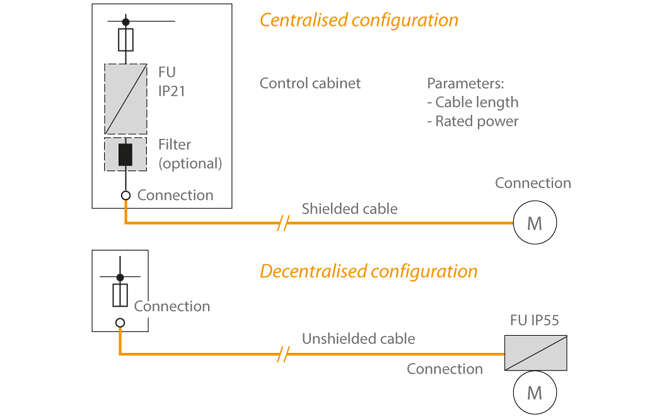Drive systems
Drive systems convert electrical into mechanical (kinetic) energy using electrical machines and play a key role in automation systems, which require many movements to be carried out using electric drives. Electronics are vital and used to control the drives as well as supply them with electrical energy. Classic electrical machines are synchronous, asynchronous and direct current motors.
Decentralised drive systems
In a decentralised drive system, only the power supply and, if required, components of a central open-loop control system of the multiple-motor configuration are installed in a control cabinet. All other functional units such as frequency inverters and closed-loop control systems are fitted near the motors or directly on them.
This concept is of particular advantage for large machines or plants, or machines or plants that are spread out over an extensive area. See Fig. 1 Drive systems

Fig. 1 Drive systems: Comparison between centralised and decentralised drive systems, FI = frequency inverter
Centralised drive systems
In centralised drive systems, the power supply, frequency inverters, motor controllers and various control units of the multiple-motor configuration are housed in a central control cabinet. The motors and other process-related control elements are supplied or controlled from this cabinet, and required sensor signals are returned there. See Fig. 1 Drive systems